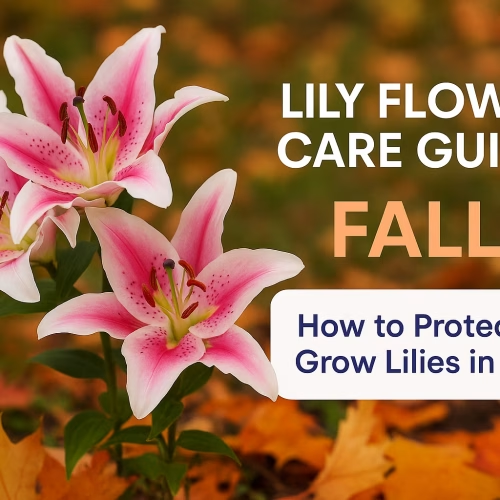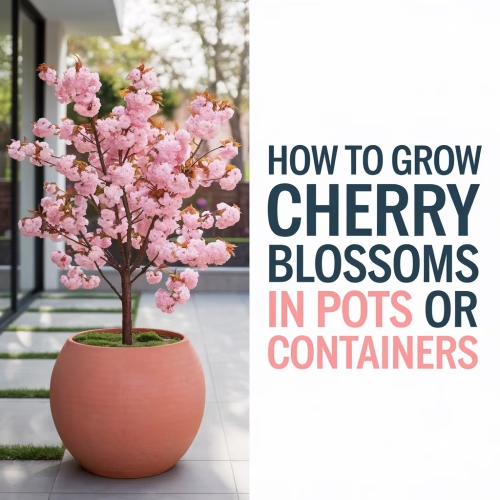How to Harvest and Store Your Fall Garden Crops
There’s something truly magical about walking through your garden on a crisp autumn morning, basket in hand, ready to gather the fruits of your labor. After months of nurturing, watering, and tending to your fall crops, harvest time is finally here! But here’s the thing – knowing when and how to harvest your vegetables can make the difference between produce that lasts for months and crops that spoil within weeks.
I’ve learned this lesson the hard way over the years. My first fall harvest was a disaster – I picked everything too early, stored it all wrong, and ended up composting half of my beautiful pumpkins and squash. It was heartbreaking! But through trial, error, and plenty of research, I’ve discovered the secrets to harvesting and storing fall crops so they stay fresh, delicious, and nutritious well into winter.
In this comprehensive guide, I’ll walk you through everything you need to know about harvesting and storing your fall garden bounty. Whether you’re growing root vegetables, winter squash, leafy greens, or brassicas, you’ll learn the exact techniques that will help you preserve your harvest for maximum flavor and longevity.
Key Takeaways
Understanding Fall Harvest Timing 🍂
The key to a successful fall harvest starts with perfect timing. Unlike spring and summer crops that you can often pick continuously, fall vegetables typically have a narrower harvest window.
The First Frost Factor
Many fall crops actually improve in flavor after experiencing a light frost. The cold temperatures trigger plants to convert starches into sugars as a natural antifreeze mechanism. This is why fall carrots, parsnips, and kale taste so much sweeter than their summer counterparts.
However, there’s a big difference between a light frost (28-32°F) and a hard freeze (below 28°F). A light frost enhances flavor, but a hard freeze can damage cell structures and make vegetables mushy and inedible.
Signs Your Crops Are Ready
Each crop has specific indicators of readiness:
How to Harvest Root Vegetables Properly
Root vegetables are the backbone of fall harvests, and they’re incredibly forgiving when it comes to storage – if you harvest them correctly.
Carrots, Parsnips, and Turnips
When to Harvest: After at least one light frost, but before the ground freezes solid. In many regions, this means late October through November.
How to Harvest:
Pro Tip: Leave some carrots and parsnips in the ground all winter if you have well-draining soil. Mulch heavily with straw, and you’ll have fresh vegetables to harvest throughout winter!
Beets and Radishes
These colorful roots follow similar harvesting rules, but they’re a bit more time-sensitive.
When to Harvest: Before hard freezes, as they don’t tolerate extreme cold as well as carrots.
Special Considerations:
Potatoes and Sweet Potatoes
These tubers require a different approach altogether.
Regular Potatoes:
Sweet Potatoes:
Harvesting Winter Squash and Pumpkins 🎃
Winter squash is one of the most rewarding fall crops because it stores so beautifully – sometimes for 6 months or more!
Perfect Timing Indicators
Your squash is ready when:
Important: Harvest all winter squash before the first hard frost. Even a single night below 28°F can damage the flesh and reduce storage life.
Proper Harvesting Technique
The Curing Process
This step is non-negotiable for long-term storage:
Varieties and Their Storage Life:
| Squash Type | Storage Duration | Best Temperature |
|————-|——————|——————|
| Butternut | 3-6 months | 50-55°F |
| Acorn | 2-3 months | 50-55°F |
| Spaghetti | 3-4 months | 50-55°F |
| Hubbard | 5-6 months | 50-55°F |
| Delicata | 1-3 months | 50-55°F |
Harvesting Brassicas: Cabbage, Broccoli, and Brussels Sprouts
The cabbage family thrives in cool weather and can often be harvested well into late fall or even early winter.
Cabbage
Harvest Indicators:
Method: Cut at the base with a sharp knife, leaving outer leaves and roots in place. Sometimes, small secondary heads will form!
Broccoli and Cauliflower
These are more time-sensitive than cabbage:
Brussels Sprouts
These little gems are perhaps the most frost-tolerant of all:
Just like developing healthy habits takes consistency, maintaining your fall garden through harvest requires regular attention and care.
Leafy Greens: Kale, Chard, and Spinach
Fall greens are incredibly hardy and can provide fresh vegetables long after summer crops have succumbed to frost.
Kale – The Ultimate Cold-Weather Champion
Kale is nearly indestructible:
Swiss Chard
This colorful green is almost as tough as kale:
Spinach and Lettuce
These are more cold-sensitive but still valuable fall crops:
Optimal Storage Conditions for Fall Crops
Now that you’ve harvested everything perfectly, proper storage is what will make or break your winter food supply.
The Four Storage Categories
1. Cold and Moist (32-40°F, 90-95% humidity)
Perfect for:
Storage methods:
Pro tip: Store root vegetables in damp sand, sawdust, or peat moss in wooden boxes or plastic bins with ventilation holes.
2. Cold and Dry (32-40°F, 60-70% humidity)
Perfect for:
Storage methods:
3. Cool and Dry (50-60°F, 60-70% humidity)
Perfect for:
Storage methods:
4. Cold Storage (32-40°F, 85-90% humidity)
Perfect for:
Taking care of your harvest is a form of self-care, much like the practices outlined in self-care ideas for when you’re feeling overwhelmed. Both require patience and attention to detail.
Creative Storage Solutions for Small Spaces
Don’t have a root cellar? No problem! Here are modern solutions that work beautifully:
The Refrigerator Method
Your fridge is actually an excellent root cellar substitute:
The Garage or Shed Approach
If you have an unheated garage or shed:
The Buried Container Trick
This old-fashioned method works surprisingly well:
The Spare Room Strategy
Got an unused bedroom or closet?
Common Storage Mistakes to Avoid ⚠️
After years of trial and error, I’ve identified the most common mistakes that lead to spoilage:
1. Storing Damaged Produce
Even small bruises or cuts create entry points for decay. Always:
2. Washing Before Storage
Moisture is the enemy of long-term storage:
3. Wrong Temperature or Humidity
This is the #1 cause of storage failure:
4. Storing Incompatible Crops Together
Some vegetables don’t play well with others:
5. Forgetting to Check Regularly
Out of sight shouldn’t mean out of mind:
Preserving Your Harvest Beyond Fresh Storage
Sometimes you’ll have more than you can store fresh, or you want variety in preservation methods.
Freezing
Best for:
Quick blanching guide:
Fermentation
Fall crops are perfect for fermentation:
Fermented foods are excellent for gut health, similar to the benefits you’ll find in gut-healing smoothie recipes.
Dehydrating
Great for:
Root Cellar Alternatives: Modern Technology
If traditional storage isn’t working:
Making the Most of Your Stored Harvest
Having all these beautiful vegetables stored is wonderful, but you need to actually use them! Here’s how I stay on top of my harvest:
Create a Storage Inventory
I keep a simple list on my phone:
Plan Meals Around Your Harvest
Rather than planning meals and then shopping, flip the script:
Develop a Rotation System
Use the “first in, first out” principle:
Share the Abundance
If you find yourself with more than you can use:
The joy of sharing your harvest with others is similar to the fulfillment you get from romanticizing your daily life – it’s about finding beauty and connection in simple acts.
Troubleshooting Common Storage Problems
Even with perfect technique, issues can arise. Here’s how to address them:
Problem: Root Vegetables Becoming Limp
Cause: Too dry or too much air exposure
Solution:
Problem: Squash Developing Soft Spots
Cause: Insufficient curing, bruising, or too-cold storage
Solution:
Problem: Cabbage Developing Strong Odor
Cause: Natural aging process, too-warm storage
Solution:
Problem: Potatoes Sprouting
Cause: Too warm, exposure to light, or stored with onions
Solution:
Problem: Mold or Rot Spreading
Cause: Damaged produce, too much moisture, poor air circulation
Solution:
Extending Your Harvest Season
Why stop at storage when you can keep harvesting fresh vegetables even longer?
Use Row Covers and Cold Frames
These simple tools can extend your season by weeks or even months:
Mulch Heavily
A thick layer of mulch (8-12 inches) can:
Try Winter Gardening
In many climates, certain crops can be planted in fall for winter harvest:
Just as getting better sleep naturally requires creating the right environment, extending your garden season is about providing optimal growing conditions.
Planning Next Year’s Fall Garden
As you harvest and store this year’s crops, take notes for next year:
What Worked Well
Document your successes:
What to Improve
Be honest about challenges:
New Things to Try
Keep your garden exciting:
This reflective practice is similar to using journal prompts for self-growth – it helps you learn and improve year after year.
Conclusion: Enjoying the Fruits of Your Labor
Harvesting and storing your fall garden crops is both an art and a science. It requires attention to detail, proper timing, and suitable storage conditions, but the rewards are immeasurable. There’s something deeply satisfying about opening your storage area in January and selecting fresh carrots you grew yourself, or roasting butternut squash that’s been curing since October.
Your Next Steps:
Remember, every gardener experiences failures and successes. Don’t be discouraged if some crops don’t store as long as you’d hoped, or if you lose a few to rot. Each season teaches valuable lessons that make you a better gardener.
The journey from seed to stored harvest is a beautiful cycle that connects us to our food, the seasons, and the earth. It’s a practice in patience, observation, and gratitude – qualities that enrich our lives far beyond the vegetables themselves.
So grab your harvest basket, head to your garden, and start gathering those beautiful fall crops. Your winter self will thank you for the effort you put in today. And next year, armed with the knowledge from this guide and your own experience, you’ll harvest and store with even more confidence and success.
Happy harvesting! 🌾🥕🎃
—
SEO Meta Title and Description
Meta Title: How to Harvest & Store Fall Garden Crops (2025 Guide)
Meta Description: Learn when and how to harvest fall crops plus storage tips to keep vegetables fresh for months. Expert guide to preserving your autumn garden bounty.
—
Image Prompts
IMAGE_PROMPT_1: Create a 1536×1024 landscape cover image with a rustic wooden harvest table filled with colorful fall vegetables including orange pumpkins, purple cabbage, orange carrots with green tops, and butternut squash. Soft autumn sunlight streams in from the left. On the right side, overlay the title “How to Harvest and Store Your Fall Garden Crops” in bold, modern typography. Make “Harvest” and “Store” in navy blue, “Fall Garden Crops” in orange/maroon, and the rest in white. Use a warm, soft-toned background with plenty of negative space. Ensure all text is perfectly readable, properly aligned, and nothing is cut off at the edges.
IMAGE_PROMPT_2: Create a 1536×1024 landscape infographic titled “Fall Harvest Timing Guide” at the top in bold navy text. Divide the image into four sections showing: 1) A frost-covered carrot with “After First Frost” label, 2) A winter squash with “Before Hard Freeze” label, 3) Brussels sprouts with “Can Survive 10°F” label, and 4) A thermometer showing temperature ranges. Use icons, clean layout, warm autumn colors (orange, brown, green), and ensure all text is very readable, properly sized, centered, and fits perfectly within the image boundaries without any cutoff.
IMAGE_PROMPT_3: Create a 1024×1024 square image showing a beautiful cross-section view of proper root vegetable storage. Display a wooden crate filled with layers of carrots, beets, and parsnips separated by damp sand. Use warm, earthy tones. Include clear labels pointing to key elements: “Damp Sand,” “Good Air Circulation,” and “Cool Temperature 32-40°F.” Make sure all text is legible, properly sized, well-aligned, and nothing is cropped at the edges. Style should be illustrative and educational with a cozy, rustic feel.
IMAGE_PROMPT_4: Create a 1536×1024 landscape storage conditions chart titled “Optimal Storage Conditions for Fall Crops” in bold text at the top. Create four columns with headers: “Cold & Moist,” “Cold & Dry,” “Cool & Dry,” and “Cold Storage.” Under each, list appropriate vegetables with small icons, temperature ranges, and humidity percentages. Use color coding: blue for cold, orange for cool. Ensure clean, modern design with perfect text alignment, proper sizing, and all elements fitting completely within the boundaries without cutoff.
IMAGE_PROMPT_5: Create a 1024×1024 square image showing hands in garden gloves carefully harvesting a large butternut squash, using pruning shears to cut the stem, leaving 3-4 inches attached. Beautiful autumn garden background with soft focus. Natural lighting. Include a text overlay in the corner with “Leave 3-4 inches of stem” in white text on a semi-transparent navy background. Ensure all text is readable, properly placed, and not cut off at any edges. Warm, inviting, instructional photography style.
IMAGE_PROMPT_6: Create a 1536×1024 landscape image showing a well-organized storage area with wooden shelves. Top shelf displays winter squash and pumpkins with labels. Middle shelf has wooden crates with root vegetables in sand. Bottom area shows mesh bags of onions hanging. Include a temperature/humidity gauge visible in the scene. Warm, rustic aesthetic with good lighting. Add text overlay “Storage Success: Organization & Monitoring” in bold typography. Ensure all elements, text, and components are well-aligned, properly sized, and fit perfectly within boundaries with nothing cut off.




